Where: Aula Magna, CU001 building (Rectorate), Sapienza University campus
Address: Piazzale Aldo Moro, 5, 00185 Roma
When: Wednesday 28 August, 15:00-18:30
Price: Free for delegates
How to get there:
Building CU001 is located close to the registration desk at the Faculty of
Lettere e Filosofia (CU003). The Campus can be reached through underground (metro),
stopping at Castro Pretorio or Policlinico, followed by a short walk. Sapienza is also only a
20-minute walk from Termini Station and 30-minute walk from Tiburtina Station. Buses and
trams link the adjacent Piazzale del Verano to the centre of Rome and various urban locations.
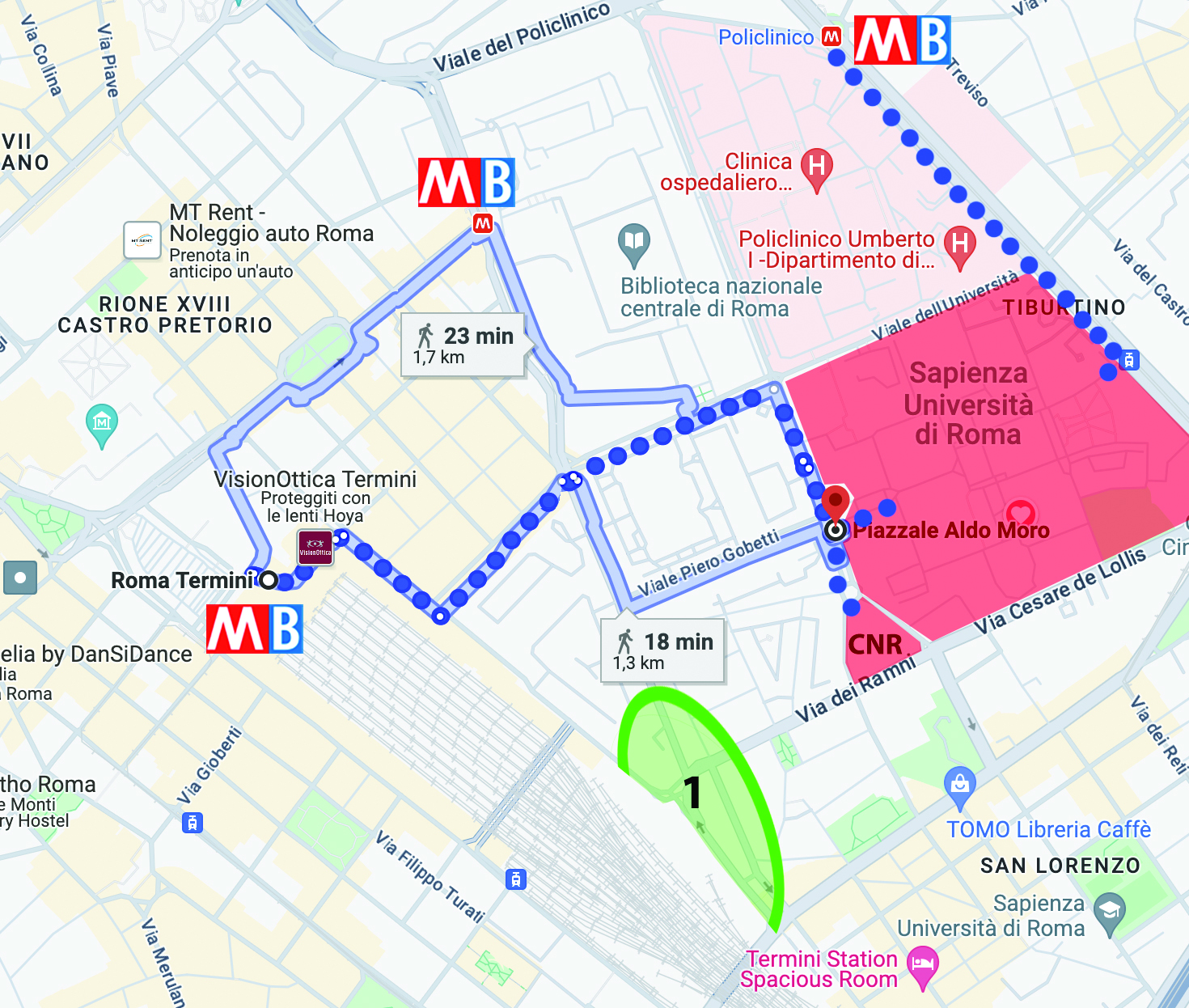
1 - This shared space may be used by individuals experiencing homelessness. Please be considerate and exercise caution.
Description:
The Opening Ceremony will take place in the major hall of Sapienza University,
with a capacity of 850 seats; the ceremony will be further streamed in 4 lecture rooms
in CU028 (Blue Building), totalling 485 seats. Aula Magna is unfortunately not accessible
from the monumental front staircase, which is undergoing restoration works, but from the
back side porch. The palace of the Rectorate, finished in 1935, is the core of the Campus, and
a characteristic mix of architectural Rationalism and magniloquence of the most powerful
and rhetorical season of Italian architecture of the Fascist period. The wide use of travertine,
with inserts of precious marble, is also typical of Sapienza buildings. Inside the hall, the fresco
by the renowned painter Mario Sironi has been recently restored, and although it was originally
strongly connected to the celebration of the regime, its classicist representation of scientific
disciplines and Italy can be seen also as a message for the fight of knowledge against obscurity,
paradoxically also of the Fascist dictatorship. The tones of Sironi are typically showing a
vein of melancholy. A complex monument, reflecting the complexities of Italian history and
perhaps the human journey. Now it is a well-suited meeting hall.
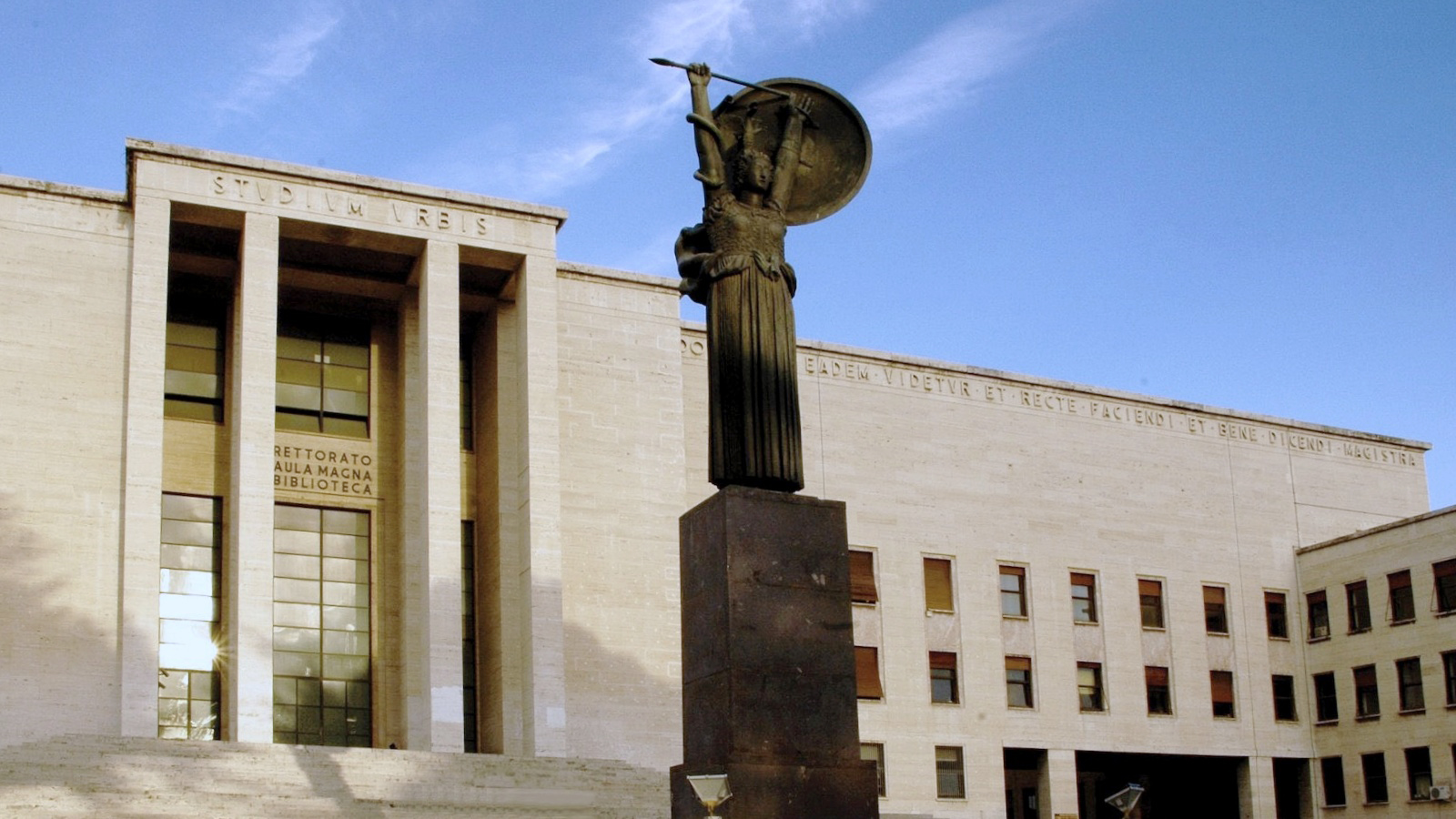
Programme:
- Compere: Tezeta Abraham (actress and writer)
- Institutional Greetings
- Welcome by Eszter Banffy (EAA President)
- Presentation of the European Archaeological Heritage Prize, OMF Early Career
Achievement Prize, EAA Student Award, EAA Book Prize, and Honorary Membership
- Archaeological Dialogue by Paolo Carafa (Sapienza University of Rome) & Wieke de
Neef (Bamberg University)
- Keynote lectures by Luca Bondioli (formerly Museo delle Civilta, Roma) and by Daniela
Porro (Soprintendenza Speciale Archeologia, Belle Arti e Paesaggio di Roma)
- Music by Open Trios
Where: Vigna Barberini, Palatine Hill
Address: Park of the Colosseum, Via Sacra (Titus’ Arch entrance) 00186 Roma
When: Wednesday 28 August
Price: Free for delegates, 19:30-22:00
How to get there: From Sapienza University, the easiest way to reach the Colosseum Park
is through Underground Metro line B (blue line): 4 stops from Policlinico (direction Laurentina),
followed by a short walk (50 minutes in total). Many buses reach the central archaeological
area.
Tourists will leave the Roman Fora at 19:15. The entrance for EAA delegates is scheduled
between 19:30 and 20:30, only from the Via Sacra/Titus’ Arch entrance. Sunset is expected
at 19:50. Access for disabled persons is from Via di San Gregorio, 30 (Vignola’s Portal). The
estimated capacity is approx. 2,500 people.
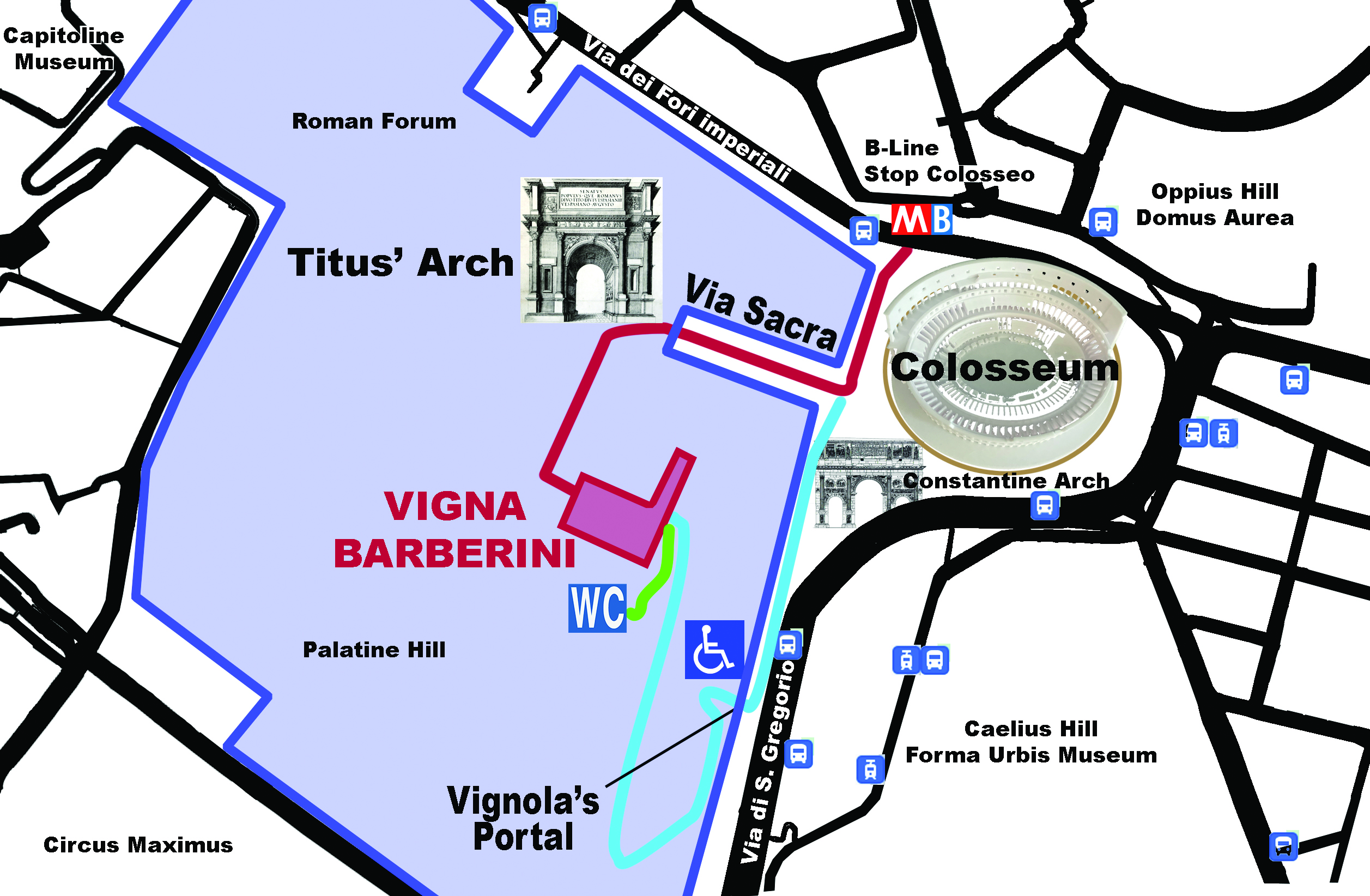
Description: Vigna Barberini, a former vineyard of the Roman noble family, is an intermediate
area between the Fora and Via Sacra area and the Palatine hill. It was occupied by
aristocratic houses and different facilities in the Roman Republic and early Imperial ages, and
remained at the fringe of the Imperial Palace over the Palatine. Eventually, the construction
of the temple of Deus Sol Invictus (a solar god of Eastern Mediterranean origin) by emperor
Elagabalus (218-222) fenced it away inside a high square wall, still standing. Churches and
Monasteries occupied the adjacent areas, and are still in use, today. This created a suspended,
isolated space that maintains a magical atmosphere within the busy central archaeological
area.
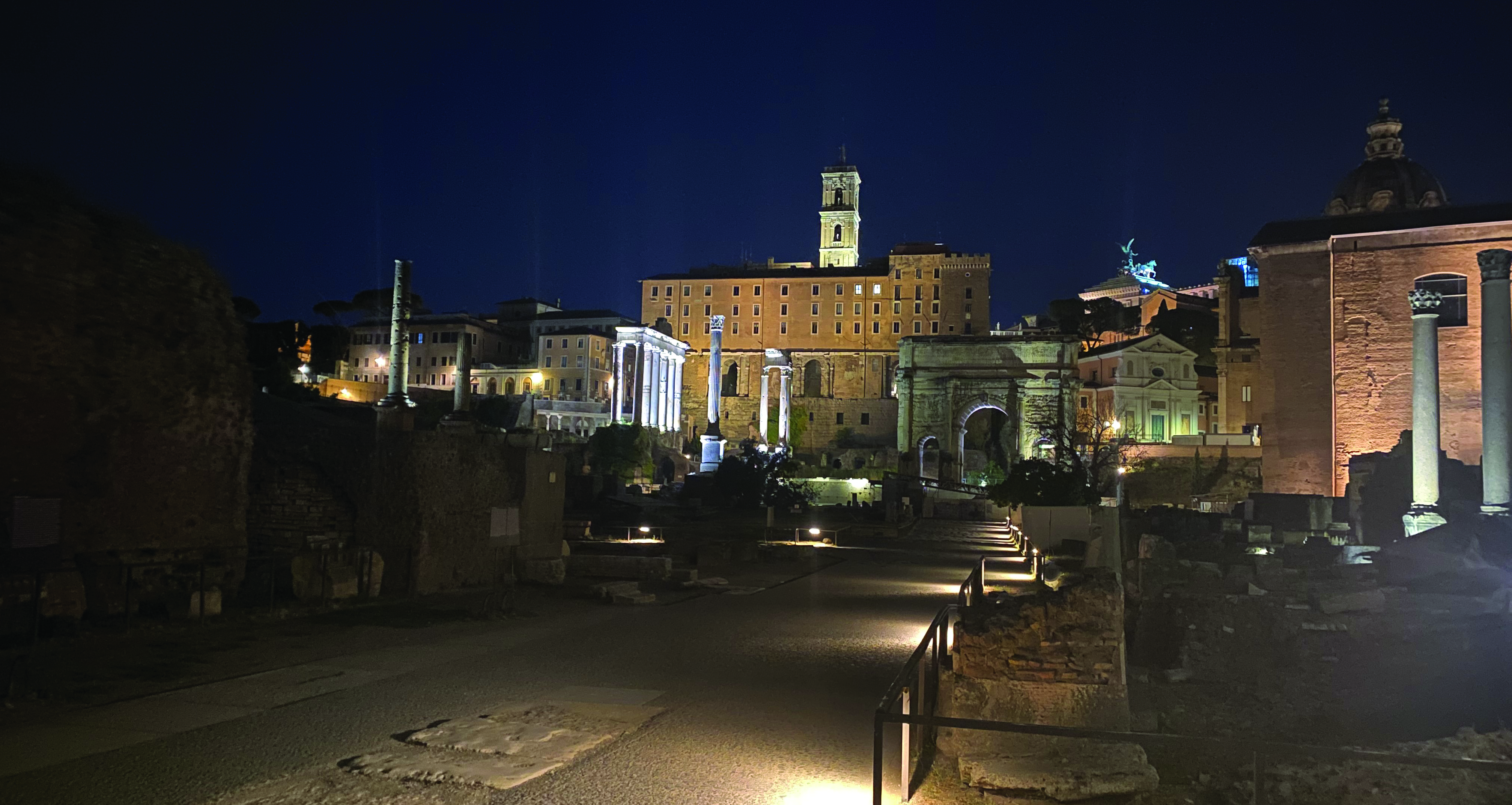
Programme:
Welcome by Alfonsina Russo (Director, Parco del Colosseo) and Eszter Banffy (EAA
President)
Refreshments and finger food
Where: Testaccio Estate - Citta dell’Altra Economia,
Address: Largo Dino Frisullo, 00153 Roma
When: Thursday 29 August, 20:30 - 02:00
Price: Free for delegates
How to get there: Testaccio Estate is near Ostiense, accessible by various public transports.
It is 6 km from Sapienza and can be reached via Metro Line B, bus, and tram.
Metro Line B: Stop at Piramide (Piazzale Ostiense), then walk 15 minutes via Pyramid,
S. Paolo Roman Gate, Via Marmorata, and Via Galvani, then left to reach the Testaccio
Estate Gate. The last metro departs at 23:30 on Thursdays.
Bus and Tram: Take Bus 19NAV from Piazzale del Verano to Piazza di Porta Maggiore,
switch to Tram 3L and stop at Marmorata/Galvani. Walk 10 minutes via Via Galvani and
the long wall to reach the gate.
Night Buses (23:30 - 5:30): Four night buses (nME, nMB, n716, n3d/n3s) serve the
Ostiense area every 30 minutes.
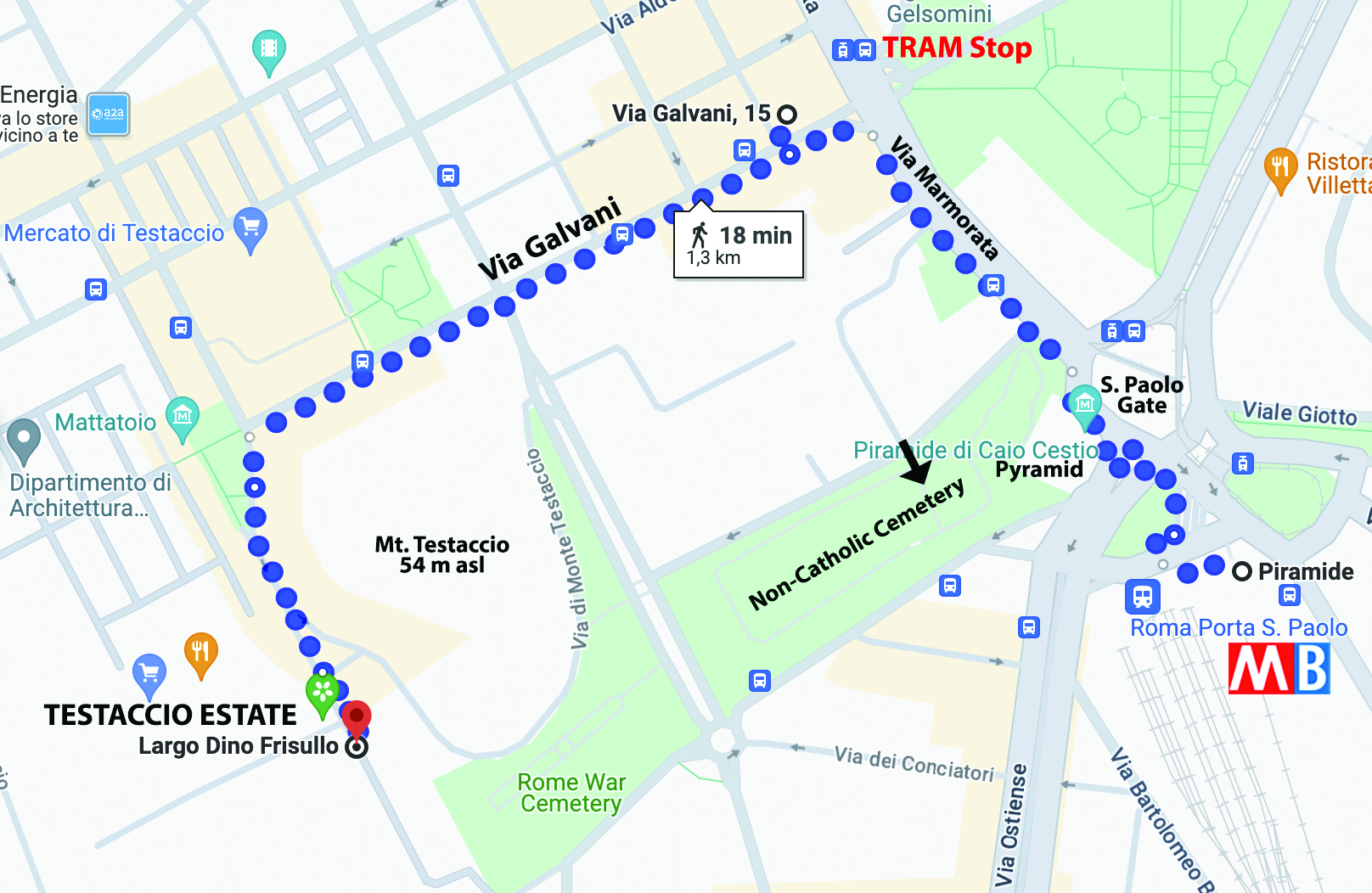
Description of the location: Testaccio Estate is a summer facility for concerts and shows
within the Citta dell’Altra Economia, a reclaimed area hosting Roma Tre University (Architecture),
a music school, art exhibitions, and a theater. It features a bar and a Roman/fusion
restaurant. There will be live music and a DJ set until 01:00. One drink is included, and additional
food and drinks can be purchased. The food options range from affordable pasta and
pizza to international cuisine, with a nearby restaurant for special dishes.
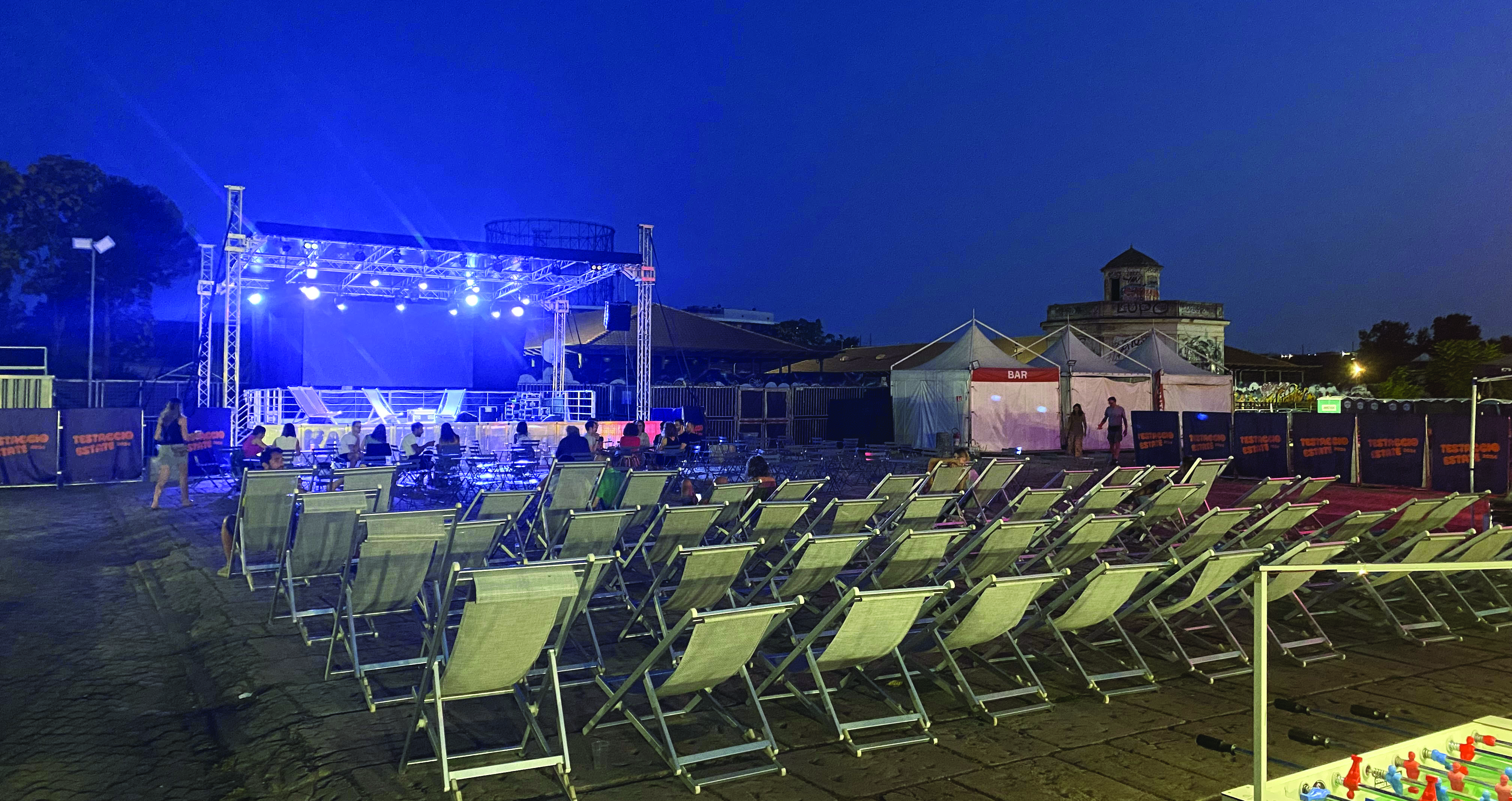
History and character of the area: Testaccio is named after the pots (testae) accumulated
in the area, once Rome’s fluvial harbour. The garbage dump of Mount Testaccio, made of oil
amphoras, provides insights into ancient Roman economy. Testaccio Estate is at the hill’s
base, surrounded by bars and restaurants. The district, built in the late 19th century, was
once an industrial hub with facilities now being converted into universities, art academies,
museums, and housing. Testaccio is known for its traditional Roman restaurants, especially
for meat dishes and Roman pizza. Porto Fluviale and Via Ostiense are popular nightlife areas
with diverse cuisines. In 1929, Testaccio hosted the first official stadium of AS Roma.
Special place: the Non-Catholic Cemetery: Located between the Caius Cestius Pyramid
and Mount Testaccio, this cemetery has been in use since 1716 for non-Catholic communities.
It hosts the graves of poets like John Keats and Percy Bysshe Shelley, artists, philosophers
like Antonio Gramsci, and numerous archaeologists. The cemetery is open during the
Annual Meeting (entrance with donation, 9:00-16:30).
Programme:
- 21:00-22:00: Live Music
- 22:00-01:00: DJ Set by Borghetta Stile, featuring music from the ‘80s to ‘10s
Where: Giardino Verano, Piazzale del Verano, 00185 Roma
When: Friday 30 August, 20:00-24:00
Price: 12,2 EUR (includes 1 drink and finger food)
Description: EAA MERC Community gathering at Giardino Verano. The price includes one drink and a selection of finger foods.
Description of the location: Giardino Verano is a public space for cultural and social events
in front of the Early Christian Basilica of San Lorenzo. While many bars and restaurants may
be closed in late August, Giardino Verano operates all summer. Visitors can relax, listen to
music, meet friends, study, play, eat, and drink in a cozy, tree-filled atmosphere.
History and character of the area: The San Lorenzo area, once marginal and outside the
Roman walls along Via Tiburtina, contains Roman and Medieval remains and the San Lorenzo
catacombs. The catacombs are the predecessors of Rome’s traditional Monumental Cemetery
of Verano, now limited in use for new burials. The San Lorenzo Basilica, built on the
site of Christian martyr Lorenzo’s burial, features reused Roman architectural elements and
lavish decoration. The modern district was originally working-class and suffered the most
bombing damage in Rome during World War II on July 19, 1943, due to its proximity to the
railways, heavily impacting the Basilica. Today, the district hosts a university student community,
with traditional artisans, particularly marble workers, alongside pubs, pizza houses, art
studios, and social activist collectives.
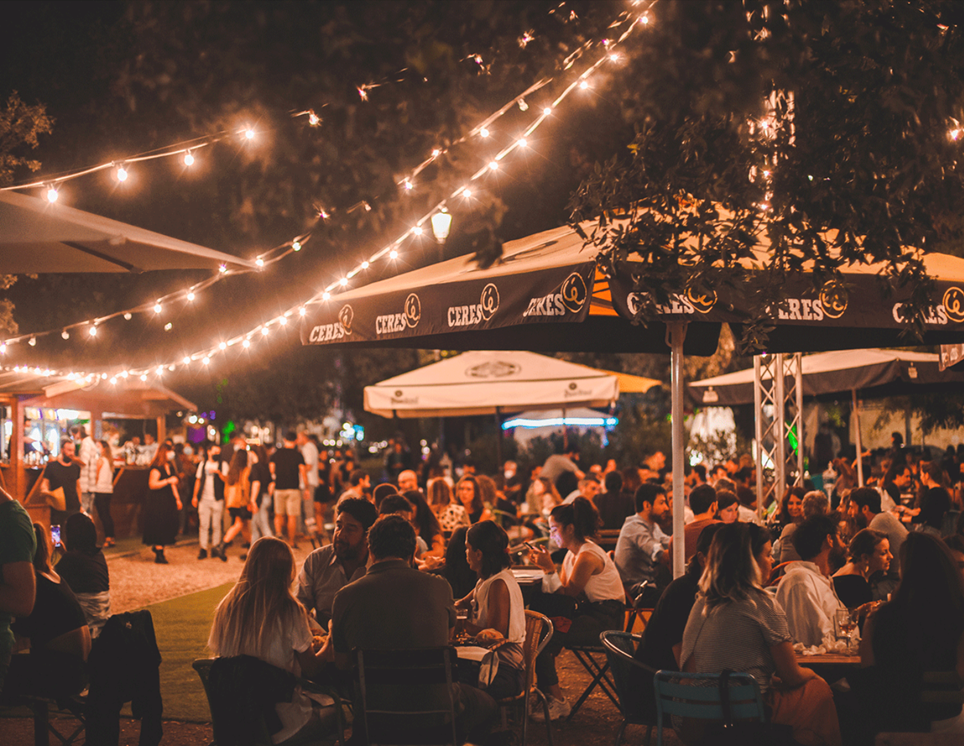
How to get there: Giardino Verano is a 10-minute walk from Sapienza, located in the San
Lorenzo neighborhood.
Night buses (23:30 - 5:30) serve Rome every 30 minutes. Verano is served by one night
bus, with another one nearby:
- n3d (clockwise) and n3s (counter-clockwise) circular lines: Piazzale Ostiense - Trastevere
- Vatican - Auditorium - Sapienza - Verano - Porta Maggiore - Colosseo - Piazzale
Ostiense
-
nearby night bus: nMB: Laurentina/EUR (South) - Ostiense - Rebibbia (North) following
Metro Line B
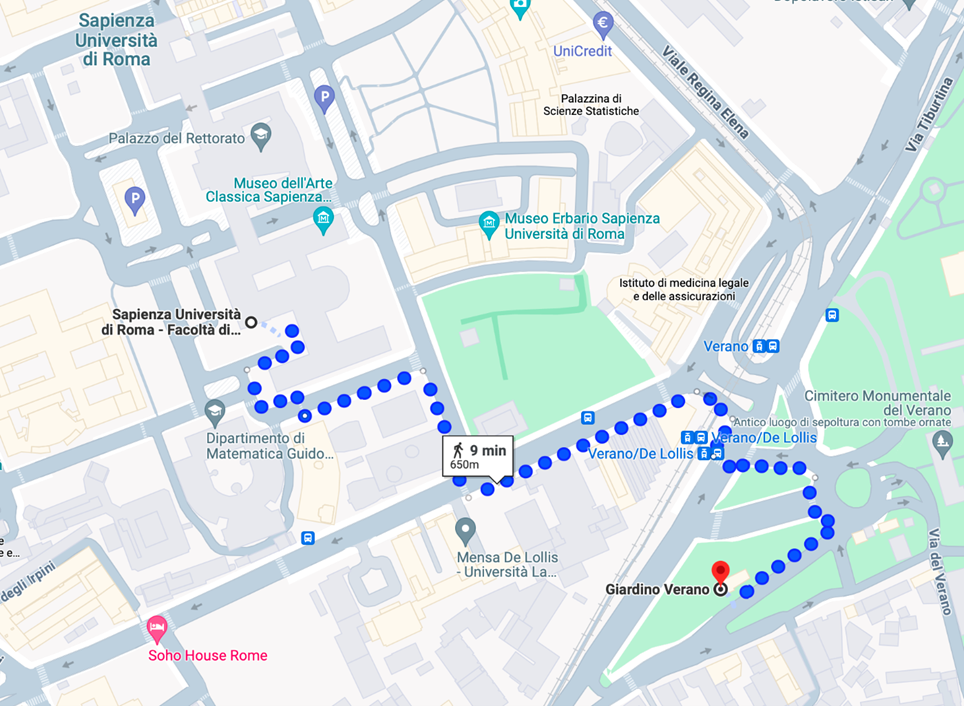
Where: Sapienza campus, space in front of the entrance of building CU003 (Viale Regina
Elena back entrance is closed around 20:00)
When: Saturday 31 August, 20:00 - 22:00
Price: free for all delegates
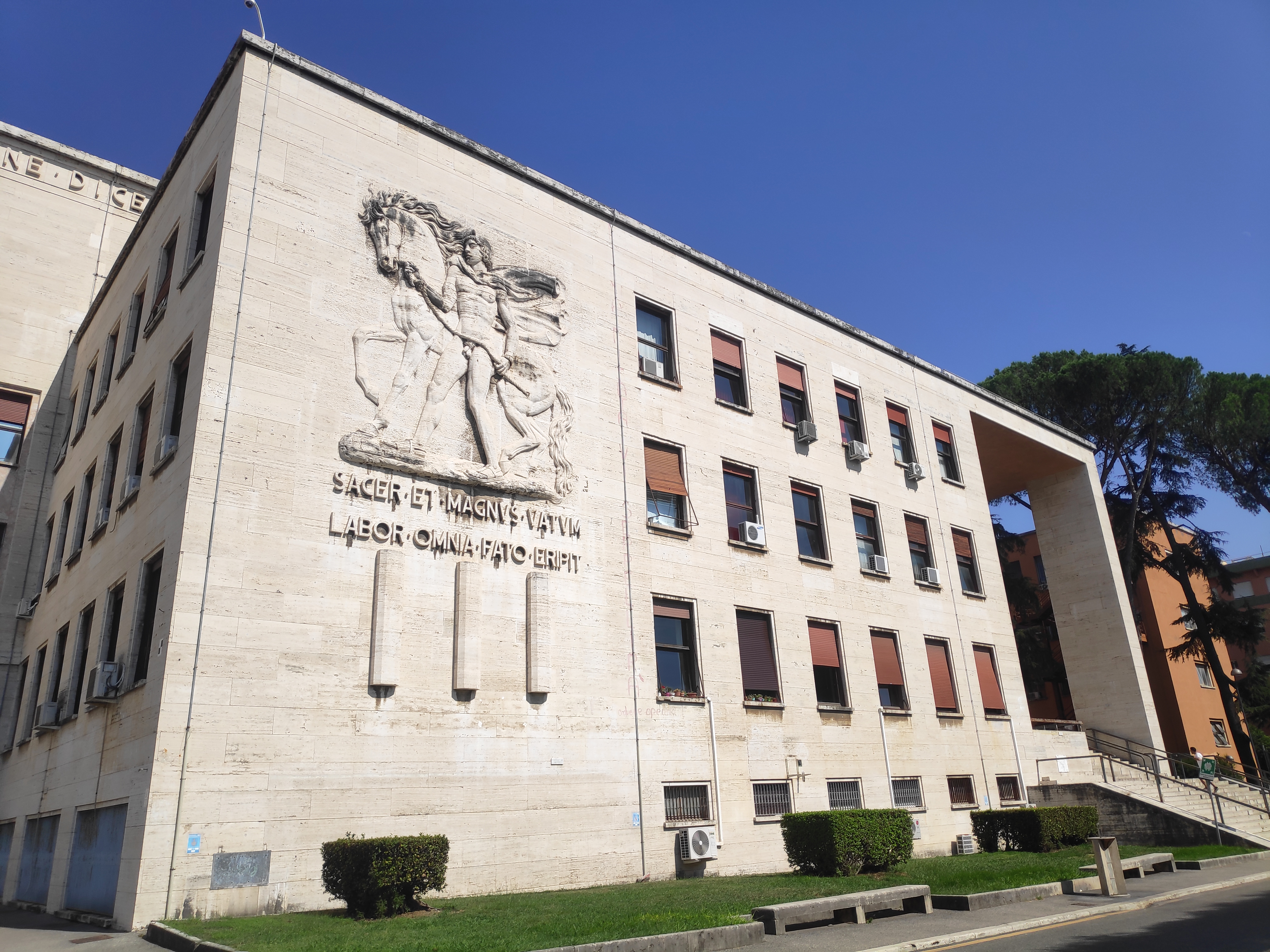
How to get there: The campus can be reached via the metro, stopping at Castro Pretorio or
Policlinico, followed by a short walk. Sapienza is also a 20-minute walk from Termini Station
and a 30-minute walk from Tiburtina Station. Buses and trams connect the nearby Piazzale
del Verano to the centre of Rome and various urban locations.
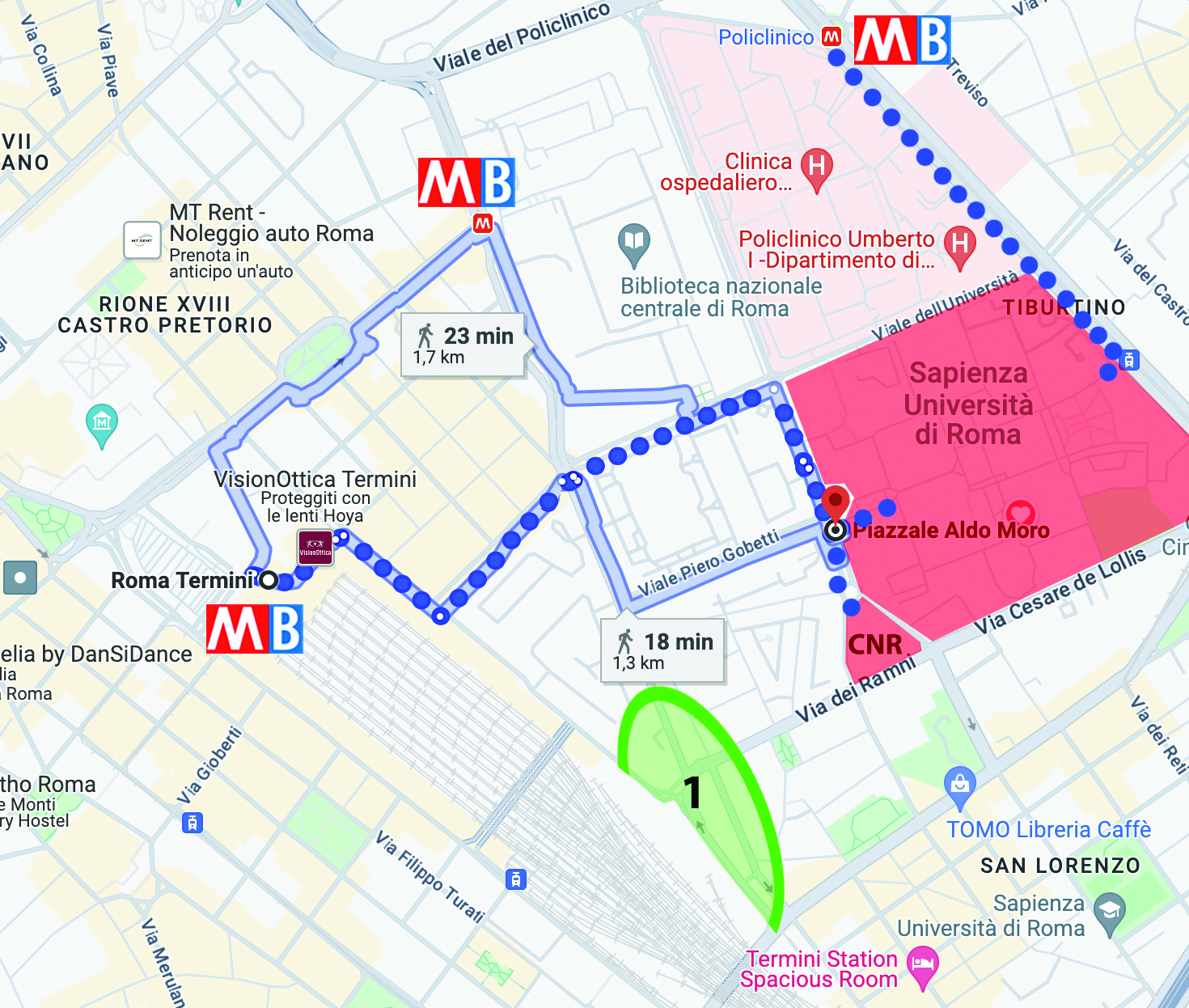
1 - This shared space may be used by individuals experiencing homelessness. Please be considerate and exercise caution.
Programme:
- Greetings by the Faculty Dean Arianna Punzi
- Invitation to Belgrade 2025 by Eszter Banffy (EAA President) and the Belgrade Organising
Committee
- Short Commemoration of Anna Maria Bietti Sestieri, one of the founders of EAA
- Piano Solo by Giovanni Bietti, performing music loved by his mother
- Refreshments and finger food